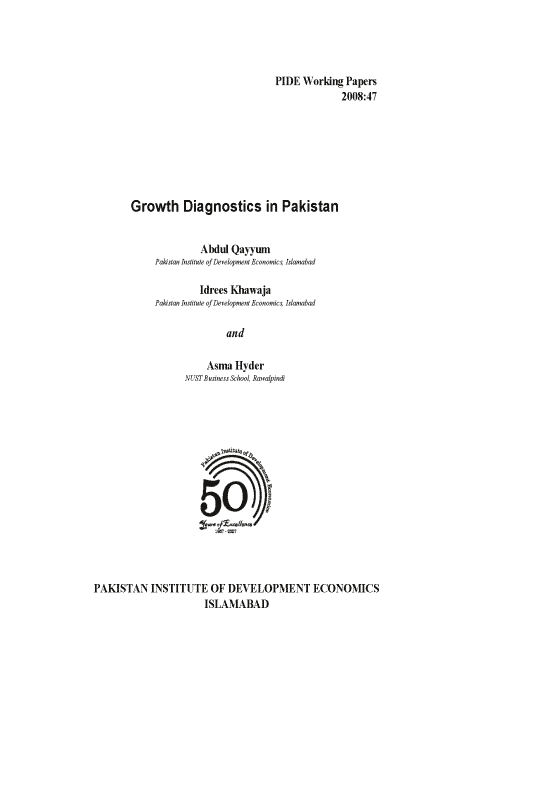
Pakistan Institute of Development Economics
- Home
Our Portals
MenuMenuMenuMenuMenuMenuMenu - ResearchMenuMenuMenuMenuMenuMenuMenu
- Discourse
- The PDR
- Our Researchers
- Academics
- Degree Verification
- Thesis Portal
- Our Portals
Growth Diagnostics in Pakistan
Following the Hausmann, et al. (2005) methodology, we attempt to identify the constraints to growth in Pakistan. We argue that governance failure and institutional shortcomings are the heart of the matter: corruption is rampant, judicial independence is low, educational institutions do not furnish the right kind of labour force, legal institutions do not protect the lenders against loan defaults, ambiguous land titles constrain mortgage financing and construction activity, labour market institutions restrict hiring/firing, State Bank of Pakistan (SBP) has not done its duty to contain the rising interest spread, and SECP/stock market has not played its due role in the transfer of funds from savers to investors. We identify three binding constraints to growth in Pakistan. These are: (i) poor state of governance, (ii) poor state of institutions, and (iii) lack of competitive environment (that restricts innovation and hence growth). Without improving the state of governance and that of institutions, sustainable growth cannot occur even if other factors, like a reasonable savings rate, are put in place.



